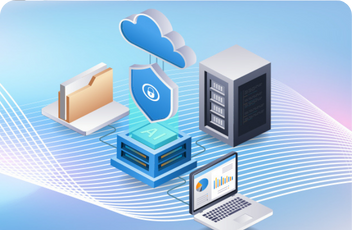In the digital age, it is not just retail banking that’s getting a makeover. Financing global trade is at the heart of the relationship between banks and corporates. Although small margins characterize this business, it has enormous volumes: by 2027, trade flows are projected to reach US$25 trillion1. Given this growth trajectory, banks have identified trade finance as a critical pillar of their future business strategy – and many are now digitalizing their trade finance workflows. By its very nature, trade finance involves processes that are hyper-focused on documentation and checking. Industry experts speculate that four billion pages and documents circulate in finance trade2 alone. Nevertheless, with technological innovations at its peak, the trade finance vertical faces a major digital overhaul, and consequently, banks are in a race to go digital.
Financial institutions and banks must digitalize their trade processes, but it is equally important for them to align their reporting systems with regulatory requirements. Here, integrated regulatory reporting and compliance systems can enable banks to automate and unify their export and import data with various regulatory compliance requirements.
Different channels of trade automation
Only through maximized digitization, automated processing, and comprehensive audit capabilities in a multi-step multi-part processing ecosystem like trade finance can financial institutions be competitive enough to reap the fruits of market growth. And thanks to rapid technological advancements, there are now various channels through which trading banks and corporate entities can easily digitalize their trade finance operations.
Host-to-host (H2H) channel
The H2H channel automates high-volume data transfer between banks and their corporate clients, thereby managing trade finance transactions. It allows banks to integrate client (importer/exporter) data in the preferred file formats with minimal input yet strong data enrichment.
The H2H channel is beneficial, as it supports the participants in trade finance with minimal inputs rather than having to collect payments and also regularize supporting fields as the transaction feed. It enables centralized customer-specific and bank-related data validation while ensuring no business data validation is rejected. As a result, the H2H framework can reduce customer transaction rejection as import or export bill details are enriched with import and export data processing and monitoring capabilities. These functionalities use the available bills or invoices and make way for quick feedback on customer-posted transactions. H2H channels provide near the actual time or daily consolidated transaction process automation reports, periodic inward and outward remittance (IRM/ORM), and bill of entry (BOE).
Web channels
Web-based SaaS platforms are another easy way for financial institutions to digitalize their trade finances. These platforms offer a transformed user experience (UX) that is simple, intuitive, and designed to give institutions greater autonomy in managing their trade transactions. Built on modern technology, the integrated trade platforms deliver an enhanced UX, unrivaled functionality, and a broad suite of connectivity options for banks. It is available on demand as a fully managed service on the cloud. These platforms can also include all export and import bills provided by the regulatory systems along with the reporting details and all export and import remittances reported by the bank to governing bodies along with the utilization details. Further, many of the present trade platforms come with integrated cognitive robotic process automation (CRPA), cognitive monitoring agent (CMA), and cognitive reader to facilitate automation of the entire trade finance workflow with little to no operational disruption.
Document digitization
Digitalizing trade documents is a crucial step that can enable trade and prevent wasteful expenditures of time and money. Additionally, it can strengthen supply-chain resilience and aid in minimizing inevitable disruptions. The international trade finance ecosystem has an excellent opportunity to come together and embrace digitization due to today’s heightened emphasis on supply-chain performance and resilience. Just like how the internet transformed the flow of information and communication, OCR with AI/ML is reinventing the exchange of value in this regard. Intelligent document processing (IDP) platforms, equipped with AI/ML capabilities, are speeding up the digitalization of trade documents. IDP can be hosted on the cloud or as an on-premises solution while the scanned documents are available at predefined locations (SFTP, cloud, or physical network storage). Banks can even use IDPs to push valid shipping bill data to existing H2H/API services for bill lodgement.
Digitalization via published APIs
Lastly, we come to the master key of the digital domain – REST API. Banks can use APIs to integrate a wide array of functionalities and services on their mainframe. It will allow them to enforce an end-to-end automated reporting system for trade finance transactions. Since this is an end-to-end automation, banks can also transform their datasets into comprehensive reports for payment regularization and auto-reporting to governing bodies through proper channels.
Other areas where APIs can help banks are:
Imports:
- Direct import payment request (data file)
- Advance import payment request (data file)
- Warehouse import (data file)
- Priority payment instruction request (debit authority)
- Transaction status enquiry
Exports:
- Lodgement request (direct dispatch)
- Lodgement and settlement request
- Transaction status enquiry
Once combined on an end-to-end automated system, these functionalities can give banks more provisions to digitalize their workflows and create a truly digital architecture of trade finance. Now is the time when banks should take their best feet forward.
Driving trade finance to a digitalized future
Technology is already making an impact through the digitization of trade processes in financial institutions, the popularity of B2B digital platforms, and the integration of institutional investors and logistics providers into the trade finance ecosystem. HTC on its part is playing a pivotal role in this digital journey. We have developed an H2H channel for our partner banks, and a customer trade compliance platform (CTCP) to help our clients comply with government mandates. The CTCP consists of all export and import bills provided by the governing bodies to banks along with the reporting details and all export and import remittances reported by the banks along with the utilization details.
HTC has also designed and implemented a combined platform – the Trade Data Processing and Monitoring System – to bridge the gap between the current reporting system of a few banks and the localized regulatory requirements. The system helps report and reconcile import and export data for banks. We have simultaneously developed an IDP for trade finance and a set of REST APIs for banks to streamline their processes. With solutions like these under our belt, HTC can play a catalytic role in digitalizing trade finance and help financial institutions make the most out of their once-manual workflows.
References
1 https://www.swift.com/swift-resource/229731/download?language=en
2 https://iccwbo.org/media-wall/news-speeches/new-icc-survey-shows-pace-trade-finance-digitalisation/





